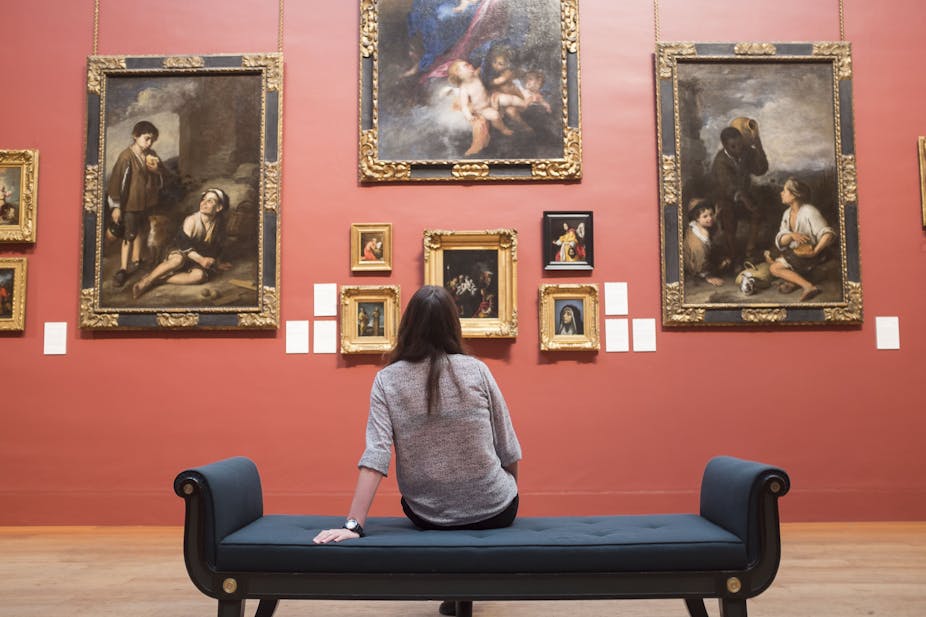Dulwich Picture Gallery has ordered a cheap replica of an old master painting from a company in China, and are insinuating it into their array of masterpieces – without telling us which one it is.
This exercise raises the often-voiced implications that all of us (experts not exempted) are readily fooled by forgeries and that our galleries are home to many works that are not what they purport to be. Are the experts and the public being widely duped? This is a question that has risen to the fore in the art world in the light of a recent series of high-profile cases.
Prominent among these is the case of Wolfgang Beltracchi, who painted large numbers of fakes of paintings by early 20th-century artists, including Max Ernst, Fernand Léger and a number of German Expressionists. They entered the markets with false provenances from the supposedly distinguished collections of his ancestors. He was jailed for four years in 2011. It seems little for such major fraud.
Seeing experts fooled provides a good deal of amusement, not least because it is good to puncture the snooty bubbles of self-proclaimed connoisseurs. When the experts are curators in one of our major museums and galleries, we enjoy an extra degree of frisson.

We have heard lurid estimates of the number of fakes in public collections. Last year the Independent carried a piece entitled “The Big Question: How many of the paintings in our public museums are fakes?”. In it, Michael Glover stated:
A reasonable estimate might be that at least 20% of the paintings held by our major museums, some up on the walls, many others in the vaults, will no longer be attributed to the same painter 100 years from now.
The reader might be led from this to think that 20% are fakes, but this is not what is being claimed. Because a painting’s attribution is changed, say, from “Rembrandt” to “a follower of Rembrandt”, does not mean that it is a fake. Studio practice and early copying rarely involved overt forgery. And 20% of changes in attribution – mostly minor – is probably too high, but not wholly impossible.
Advice for forgers
So the number of outright and unrecognised fakes in major collections of old masters is likely to be low, not least given the battery of scientific tests we can now throw at them. Although it would be unwise to claim that a modern forgery of a complex, layered old master painting would definitely be exposed, it’s probably not worth the forger’s trouble trying to get round the tests. If you’re an aspiring forger, it’s a far better idea to go for more modern paintings.
The large number of recent forgeries of 20th-century Russian art helps us to see why. Prices are burgeoning as wealthy Russian buyers enter the market. The pigments and supports used are not so dissimilar to those available today, the paint applied directly and often rapidly, without complex under-layers. There’s less of a paper trail as a lot of documentation was lost in the Soviet era. And expertise among historians and collectors in this particular area tends to be thin on the ground.
It’s too facile to say that anyone can readily paint Malevich’s Black Square, which has acquired the patina of time and a delicate craqueleure, but a thin and simply constructed painting is certainly a lot easier than a Vermeer.
If you want to forge an old master my recommendation is to go for drawings. It is not hard to obtain old paper and remake old drawing materials, such as iron-gall ink. And go for the type of drawing that relies least on the artist’s stylistic “handwriting”.

Outwitting ‘Leonardo’
I saw this at work a few years ago when I was contacted about a double-sided sheet of mechanical studies by “Leonardo”. A smart provenance had been contrived. The drawing emerged from the end-papers of an 18th-century book that was being re-bound. The studies resembled those in the Madrid Codices, and were only rediscovered in the 1960s (they would not have been forged that early). The mechanism on the front, designed to lift a heavy weight, looked Leonardesque. The writing was convincing and the notes sounded like him.
However, the back was less good, with bad mistakes in the mechanical components and with notes added in slanted lines. Then, as often happens, I began to see what was wrong with the mechanism of the front, including an axle that was too thin to bear the load that was being applied to it – not the kind of blatant mistake Leonardo would have made. Once you see something wrong, a whole set of other faults come into view. That forgery did not make it, but it was quite a close-run thing.
Our powers of judgement by eye are very malleable. I have co-authored a study with neuroscientists that shows how differently we react if we are told that a “Rembrandt” is real or an impostor. So we need all the help we can get from documentation, provenance, supporting historical evidence and science.
What we are still shamefully bad at doing is knowing how to give due weight to different kinds of evidence. While this situation persists, the forgers can get away with more than they should. It does matter. A forgery is a lie, not a game, however enjoyable and superficially convincing it might be. And although the replica in the exhibition will not strictly speaking be a fake (the studios usually change the size slightly from the originals), I will be distinctly nervous when I visit Dulwich.

